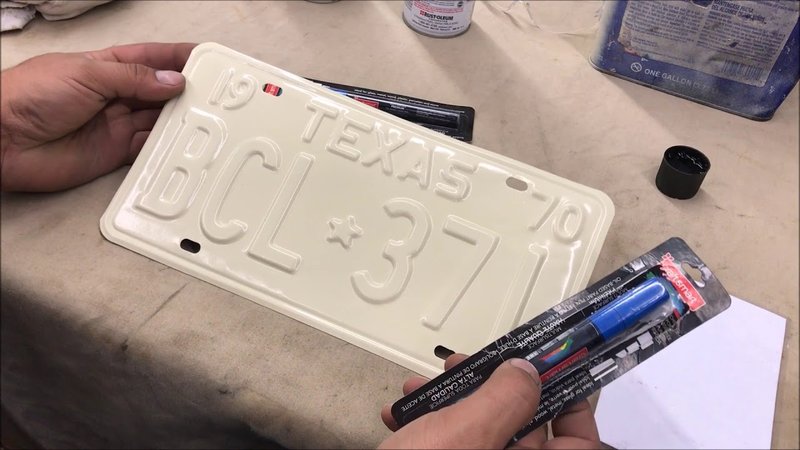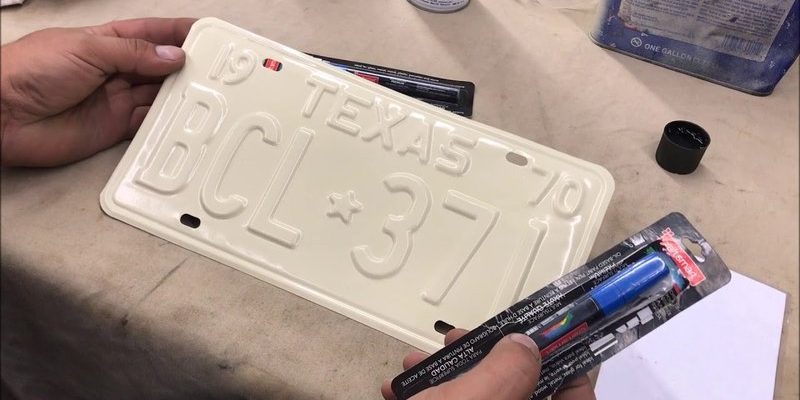
A painted kick plate works like armor for the bottom of your door, taking hits so the door itself stays clean and protected. But when the armor starts looking battered, it’s tempting to ignore it or just buy a new one. Honestly, you don’t need to. With a thoughtful cleaning routine and a little restorative care, even a tired kick plate can spring back to life. Whether your kick plate came from a big-box brand like Baldwin or it’s a generic model, the process is pretty much the same—no fancy tools, no trade secrets.
Here’s the thing: letting gunk and scratches linger only makes things worse. Dirt can wear down the paint, and moisture can sneak into cracks, eventually making you wish you’d just tackled the problem sooner. So, if you’re ready to give your entryway a quick facelift, let’s break down everything you need to know about how to clean and restore a painted kick plate.
What is a Painted Kick Plate and Why Does it Matter?
When you hear “kick plate,” think of that thin, rectangular sheet at the foot of your door. Painted kick plates are made of metal or plastic, then finished with a durable coating in colors like classic black, crisp white, or even fire engine red. They’re basically the unsung heroes of your entryway. Their job is to soak up the abuse from shoes, bags, carts, and critters, so your door doesn’t get dinged to death. Without a kick plate, the bottom of your door would be covered in chips and scratches before you finished your morning coffee.
You might be wondering, does the brand matter? It doesn’t. Whether it’s a Schlage, Baldwin, National Hardware, or just the one that came with the house, the cleaning and restoring process is about the paint and the wear—not the logo. The painted finish is what gets dull, scratched, or chipped, and that’s where your TLC will make a huge difference.
Taking care of your kick plate isn’t just about vanity—it helps preserve the value of your home and gives your front door a neat, welcoming vibe.
If you skimp on clean-ups, dirt builds up, the paint gets worn, and eventually you’re dealing with peeling spots or rust (if it’s metal). That means more intensive repairs down the road. Honestly, treating your kick plate right takes just a few minutes, and it pays off big in curb appeal.
Supplies You’ll Need to Clean and Restore a Kick Plate
Before you jump in, let’s pull together what you’ll need. You don’t want to be running back and forth mid-project, especially if you’re dealing with wet paint.
- Gentle dish soap and warm water (for cleaning off grime)
- Soft cloths or sponges (avoid anything too abrasive—you don’t want to gouge the paint)
- Plastic scraper or old credit card (for stuck-on gunk)
- Towel or rags (for drying)
- Painters’ tape (if you need to touch up paint and want sharp lines)
- Sandpaper (fine grit, 320–400) (for smoothing scratches or chips)
- Touch-up paint (matched to your kick plate’s color)
- Small brush or foam applicator (for precise touch-ups)
- Optional: mild solvent, like rubbing alcohol (for super stubborn residue)
- Latex gloves (if you want to keep your hands clean during painting)
Most of these you probably already have in your cleaning closet or junk drawer. If you need touch-up paint, check if the manufacturer sells small cans or sample sizes—many big brands like Kwikset and Baldwin do. Otherwise, a quick color match at the hardware store will do the trick.
Step-by-Step: How To Clean a Painted Kick Plate
Let me explain how to get all that dirt and grime off your painted kick plate without damaging the finish. The key is to be gentle but thorough.
Step 1: Remove Surface Dust and Debris
Use a dry, soft cloth to wipe away loose dust and dirt. Don’t scrub yet—just get the easy stuff off. If you skip this, you’ll end up pushing grit around, which can scratch the paint.
Step 2: Wash With Mild Soap
Mix a few drops of dish soap with warm water. Dip your sponge in, wring it out, and gently wipe down the kick plate. Go in small circles, and don’t soak the plate (especially if it’s mounted on a wooden door).
Step 3: Target Stubborn Spots
Got sticky gunk or dried-on mud? Take your plastic scraper or an old credit card. Carefully scrape away the residue—don’t dig in. If something’s really stuck, dampen the spot with a tiny bit of rubbing alcohol, wait a minute, and try again.
Step 4: Rinse and Dry
Wipe the kick plate with a clean, damp cloth to get rid of any soap. Dry it right away with a towel. Leaving water to air-dry can cause streaks—or worse, if it’s metal, it could lead to rust.
Here’s the thing: harsh chemicals and rough sponges will only make problems worse by damaging paint. Stick to the basics, and you’ll avoid new scratches or faded spots.
Assessing the Damage: When to Repair or Touch Up
After cleaning, take a close look at your painted kick plate. Are there chips, scratches, or full-on paint missing? Or does it just look a little dull? This step is like being a detective—find out what needs more than just soap and water.
Minor Scuffs and Scratches
If you see faint scuff marks or tiny scratches, they usually come out or fade significantly with just gentle cleaning. Sometimes, a bit of buffing with a soft cloth is all you need.
Deeper Scratches or Chips
If the paint is scraped down to the metal or plastic, you’ll probably want to touch it up. Exposed areas can rust (on metal plates) or start peeling (on plastic ones). Don’t put this off—touching up now is way easier than dealing with a bigger mess later.
Peeling or Flaking Paint
If the finish is coming off in sheets or flakes, the plate might need a more serious makeover: sanding, priming, and full repainting. But honestly, that’s rare unless your kick plate has been neglected for years.
Most everyday dings and chips can be covered with a couple of dabs of matching paint and a steady hand—no professional needed.
How to Touch Up Paint and Restore the Finish
Here’s how to give your kick plate a little facelift so it looks almost new. This is where a bit of patience makes a big difference.
Step 1: Lightly Sand Rough Spots
Grab that fine-grit sandpaper and gently sand any chipped or peeling edges. You want to feather the damaged area so it blends with the surrounding paint. Wipe away dust with a clean cloth.
Step 2: Tape Off the Surrounding Area
If you’re doing more than a tiny spot, use painter’s tape to protect the door or floor. This way, your paint stays right where you want it.
Step 3: Apply Touch-Up Paint
Use a small brush or foam applicator to dab paint onto the damaged area. Go slow—multiple light coats work better than one heavy blob. Let each coat dry completely before adding another. If you’re matching an older color, test a tiny patch first to check the shade.
Step 4: Wait and Inspect
Let the final coat dry at least a few hours, or overnight if possible. Peel the tape away carefully. If the new paint stands out, you can gently blend the edges with more sanding and a final coat.
Here’s the thing: perfection isn’t the goal—just a clean, protected finish that lets your kick plate do its job (and look good doing it).
Dealing With Troublesome Spots: Rust, Stains, and More
Sometimes, you’ll spot more serious trouble. Maybe a bit of rust if your kick plate’s metal, or a stain that laughs in the face of your soapy sponge. Let’s troubleshoot those problems.
Rusty Spots
If you see rust, act fast. Light rust can be sanded off with fine-grit sandpaper. Wipe the spot clean, then use a rust-inhibiting primer before your touch-up paint. This stops future rust and keeps your kick plate strong.
Deep Stains
For stubborn stains—like sticky sap, tar, or ground-in dirt—try a dab of rubbing alcohol on a cloth. Rub gently, then rinse. Never use bleach or harsh solvents, as those can eat through paint and leave you with a bigger headache.
Big Scrapes or Pits
If a kick plate is pitted or dented, and touch-up paint can’t hide the problem, you have a choice. Live with a few “battle scars,” or consider swapping for a new plate. Replacement is usually a snap—most brands use basic screws or adhesive.
Don’t waste time on perfection if the plate’s too far gone. Sometimes, a fresh start is the smarter move—especially if the finish is peeling everywhere.
Preventing Future Damage and Keeping Things Looking Good
Now that your painted kick plate is back in action, let’s keep it that way. A little regular care goes a long way.
- Wipe it down weekly with a soft, damp cloth. It only takes a minute and keeps dirt from building up.
- Do a full cleaning once a month, using mild soap as described above.
- Check for scratches after any big event (moving furniture, heavy foot traffic, rainstorms).
- Keep abrasive stuff away—don’t scrape shoes, tools, or carts across the plate.
- Repaint every 2-3 years or as needed, especially if you live in a harsh climate.
A little effort now means less work (and fewer replacement parts) in the future. And honestly, nothing beats the feeling of seeing a clean, tidy entryway every time you open the door.
Restoring vs. Replacing: When Is It Time?
You might be wondering: is it worth restoring my old painted kick plate, or should I just grab a new one? Here’s how I think about it:
Restore your current plate if:
- The paint is mostly intact, with only a few chips or scuffs.
- It isn’t warped, bent, or falling off the door.
- You like the color and style (and it matches your door).
Replace your kick plate if:
- The paint is peeling off in sheets or bubbling.
- There’s serious rust eating through the metal.
- The plate is dented, bent, or no longer sits flat.
- You want a totally different look or material (like switching from plastic to solid brass).
Most of the time, cleaning and touch-up is all you need for a major upgrade. But don’t beat yourself up if restoration won’t cut it—a replacement from your local hardware store or a brand like Baldwin, National Hardware, or Deltana is a quick fix, and usually under $40.
Wrapping Up: Give Your Entryway Some TLC
Honestly, it’s easy to overlook a painted kick plate, but a quick clean and a bit of touch-up go a long way. You don’t need special skills or fancy supplies—just patience, gentle cleaning, and the willingness to “show up” for the small details. A tidy, cared-for kick plate doesn’t just protect your door; it makes your home feel more put together, every time the door swings open.
If you keep up with these steps, your painted kick plate will last for years and keep looking sharp, no matter what life throws at it. There’s something satisfying about making a little effort and seeing instant results. So next time you catch a scuff down there, you’ll know exactly what to do. Happy cleaning!
